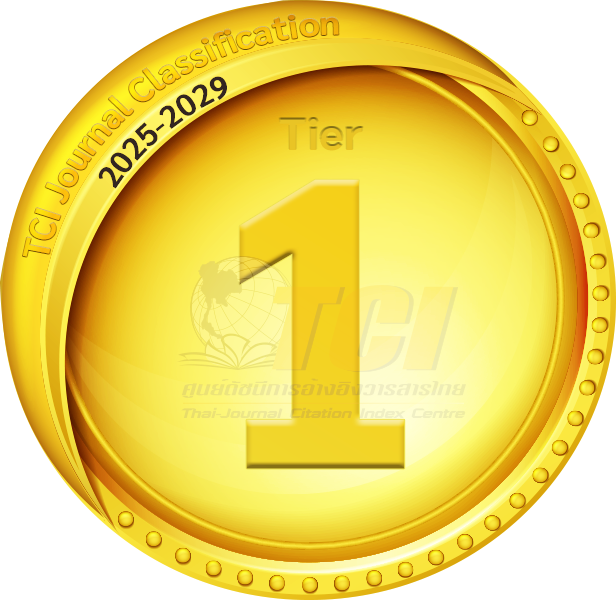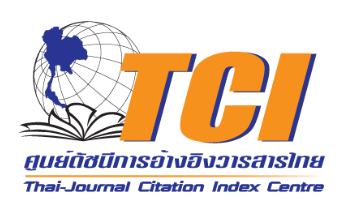Enhancing Visitor Experiences at Religious Tourism Sites in Thailand
DOI:
https://doi.org/10.69650/jcdrhs.2025.853Keywords:
Religious Tourism, Emotional Tourism Experience, Visitor Experience, Sacred SitesAbstract
Religious tourism, characterized by visits to sacred sites for spiritual, cultural, or recreational purposes, plays a pivotal role in shaping visitor satisfaction and engagement. Despite its growing global significance, research on visitors’ multidimensional experiences at sacred sites remains limited. This study investigate s the layered experiences of Thai tourists at religious tourism sites in Thailand. A qualitative research design was employed, using thematic analysis to interpret data from semi-structured, in-depth interviews with 23 Thai tourists. Participants were purposively selected to ensure variation in age, gender, and visit purpose, and interviews were conducted on-site at three key Buddhist temples in Phitsanulok Province: Wat Phra Si Rattana Mahathat Woramahawihan, Wat Nang Phaya, and Wat Ratchaburana.
The findings reveal four main dimensions of visitor experience: enjoyment, learning, aesthetics, and escape. Enjoyment stems from activities such as sightseeing, merit-making festivals, and personal leisure. Learning emerges through historical narratives, cultural engagement, and hands-on experiences like meditation. Aesthetic value was linked to architectural beauty and artistic detail, while escape reflected mental rejuvenation and spiritual reflection in peaceful surroundings. These dimensions illustrate how emotional, spiritual, and cultural elements interweave to shape meaningful visitor experiences.
This study provides practical insights for tourism planners and site managers. Operational recommendations include installing interpretive signage, designing inclusive cultural programs, and enhancing the spiritual atmosphere of sacred spaces through soundscapes and spatial planning. Such measures can balance visitor engagement with cultural preservation, reinforcing Thailand’s positioning as a destination for transformative religious tourism.
References
Abad-Galzacorta, M., Guereño-Omil, B., Makua-Biurrun, A., Santomà, R., & Iriberri, J. L. (2016). Pilgrimage as Tourism Experience: The Case of the Ignatian Way. International Journal of Religious Tourism and Pilgrimage, 4(4), 48-66. https://doi.org/10.21427/D7KT5N
Albayrak, T., Herstein, R., Caber, M., Drori, N., Bideci, M., & Berger, R. (2018). Exploring Religious Tourist Experiences in Jerusalem: The Intersection of Abrahamic Religions. Tourism Management, 69, 285–296. https://doi.org/10.1016/j.tourman.2018.06.022
Andriotis, K. (2009). Sacred Site Experience: A Phenomenological Study. Annals of Tourism Research, 36(1), 64-84. https://doi.org/10.1016/j.annals.2008.10.003
Aulet, S., & Vidal, D. (2018). Tourism and Religion: Sacred Spaces as Transmitters of Heritage Values. Church, Communication and Culture, 3(3), 237-259. https://doi.org/10.1080/23753234.2018.1542280
Balswick, J. O., & Balkwell, J. W. (1978). Religious Orthodoxy and Emotionality. Review of Religious Research, 19(3), 308-319. https://doi.org/10.2307/3510130
Belhassen, Y., Caton, K., & Stewart, W. P. (2008). The Search for Authenticity in the Pilgrim Experience. Annals of Tourism Research, 35(3), 668-689. https://doi.org/10.1016/j.annals.2008.03.007
Blackwell, R. (2007). Motivations for Religious Tourism, Pilgrimage, Festivals and Events. In R. Raj, & N. D. Morpeth (Eds.), Religious Tourism and Pilgrimage Festivals Management: An International Perspective (pp. 35–47). Oxfordshire: UK: CAB International.
Božic, S., Spasojević, B., Vujičić, M. D., & Stamenkovic, I. (2016). Exploring the Motives for Religious Travel by Applying the AHP Method: A Case Study of Vujan Monastery (Serbia). International Journal of Religious Tourism and Pilgrimage, 4(4), 33-47. https://doi.org/10.21427/D7QH7J
Budovich, L. S. (2023). The Impact of Religious Tourism on the Economy and Tourism Industry. Theological Studies, 79(1), a8607. https://doi.org/10.4102/hts.v79i1.8607
Business Research Insights. (2025). Religious Tourism Market Size, Share, Growth, and Industry Analysis, By Type (Catholicism, Islam, Buddhism, Confucianism, Hinduism, Other), By Application (Below 20 Years, 20-30 Years, 30-40 Years, 40-50 Years, Above 50 Years), and Regional Forecast to 2033. Retrieved from https://www.businessresearchinsights.com/market-reports/religious-tourism-market-118964
Chianeh, R. H., Del Chiappa, G., & Ghasemi, V. (2018). Cultural and Religious Tourism Development in Iran: Prospects and Challenges. Anatolia, 29(2), 204–214. https://doi.org/10.1080/13032917.2017.1414439
Cohen, E. (1979). A Phenomenology of Tourist Experiences. Sociology, 13(2), 179-201. https://doi.org/10.1177/003803857901300203
Collins-Kreiner, N. (2020). A Review of Research into Religion and Tourism Launching the Annals of Tourism Research Curated Collection on Religion and Tourism. Annals of Tourism Research, 82, 102892. https://doi.org/10.1016/j.annals.2020.102892
Crouch, G. I., Perdue, R. R., Timmermans, H. J. P., & Uysal, M. (Eds.). (2004). Consumer Psychology of Tourism, Hospitality and Leisure, Volume 3. Wallingford: CABI Publishing.
Ferran, Í. V. (2019). Religious Emotion as a Form of Religious Experience. The Journal of Speculative Philosophy, 33(1), 78-101. https://doi.org/10.5325/jspecphil.33.1.0078
Harrison, S. (2007). The Cambridge Companion to Horace. Cambridge: Cambridge University Press. https://doi.org/10.1017/CCOL0521830028
Hennink, M., Hutter, I., & Bailey, A. (2020). Qualitative Research Methods (2nd ed.). London, UK: SAGE Publications.
Horner, S., & Swarbrooke, J. (2020). Consumer Behaviour in Tourism (4th ed.). London: Routledge. https://doi.org/10.4324/9781003046721
Iliev, D. (2020). The Evolution of Religious Tourism: Concept, Segmentation and Development of New Identities. Journal of Hospitality and Tourism Management, 45, 131–140. https://doi.org/10.1016/j.jhtm.2020.07.012
Kasim, A. (2011). Balancing Tourism and Religious Experience: Understanding Devotees’ Perspectives on Thaipusam in Batu Caves, Selangor, Malaysia. Journal of Hospitality Marketing & Management, 20(3-4), 441-456. https://doi.org/10.1080/19368623.2011.562437
Kim, B., & Kim, S. S. (2019). The Effect of Religious Tourism Experiences on Personal Values. International Journal of Religious Tourism and Pilgrimage, 7(2), 85-93. https://doi.org/10.21427/5gvy-hh90
Kim, B., Kim, S. S., & King, B. (2020). Religious Tourism Studies: Evolution, Progress, and Future Prospects. Tourism Recreation Research, 45(2), 185-203. https://doi.org/10.1080/02508281.2019.1664084
Kim, H., & So, K. K. F. (2022). Two Decades of Customer Experience Research in Hospitality and Tourism: A Bibliometric Analysis and Thematic Content Analysis. International Journal of Hospitality Management, 100, 103082. https://doi.org/10.1016/j.ijhm.2021.103082
Kirillova, K., Lehto, X. Y., & Cai, L. (2017). Existential Authenticity and Anxiety as Outcomes: The Tourist in the Experience Economy. International Journal of Tourism Research, 19(1), 13–26. https://doi.org/10.1002/jtr.2080
Kittipornpaiboon, K. (2022). The Creation of Tourism Experience with the Concept of Sense of Place for Pilgrimage Tourists (Doctoral Dissertation). Tourism and Hospitality Management, Naresuan University, Phitsanulok. Retrieved from http://nuir.lib.nu.ac.th/dspace/handle/123456789/5282
Kujawa, J. (2017). Spiritual Tourism as a Quest. Tourism Management Perspectives, 24, 193–200. https://doi.org/10.1016/j.tmp.2017.07.011
Kumar, R. (2018). Research Methodology: A Step-by-Step Guide for Beginners (4th ed.). Los Angeles: Sage Publications.
Lee, T. H., Jan, F.-H., & Lin, Y. H. (2021). How Authentic Experience Affects Traditional Religious Tourism Development: Evidence from the Dajia Mazu Pilgrimage, Taiwan. Journal of Travel Research, 60(5), 1140-1157. https://doi.org/10.1177/0047287520921240
MacCannell, D. (1973). Staged Authenticity: Arrangements of Social Space in Tourist Settings. American Journal of Sociology, 79(3), 589-603. Retrieved from https://www.jstor.org/stable/2776259
McKercher, B. (2016). Towards a Taxonomy of Tourism Products. Tourism Management, 54, 196–208. https://doi.org/10.1016/j.tourman.2015.11.008
Mutanga, C. N., Vengesayi, S., Chikuta, O., Muboko, N., & Gandiwa, E. (2017). Travel Motivation and Tourist Satisfaction with Wildlife Tourism Experiences in Gonarezhou and Matusadona National Parks, Zimbabwe. Journal of Outdoor Recreation and Tourism, 20, 1-18.
Olsen, D. H. (2021). Fan Pilgrimage, Religion, and Spirituality. In D. H. Olsen, & D. J. Timothy (Eds.), The Routledge Handbook of Religious and Spiritual Tourism (pp. 90-110). London: Routledge. https://doi.org/10.4324/9780429201011
Packer, J., & Ballantyne, R. (2016). Conceptualizing the Visitor Experience: A Review of Literature and Development of a Multifaceted Model. Visitor Studies, 19(2), 128–143. https://doi.org/10.1080/10645578.2016.1144023
Park, E., Choi, B.-K., & Lee, T. J. (2019). The Role and Dimensions of Authenticity in Heritage Tourism. Tourism Management, 74, 99-109. https://doi.org/10.1016/j.tourman.2019.03.001
Pichphandaycha, P. (2019). Religious Tourism Management of Hong Kong Island Affecting Thai Tourists. Journal of Thithat Watthanatham, 18(2), 42-60.
Pine, B. J., & Gilmore, J. H. (1999). The Experience Economy: Work is Theatre and Every Business a Stage. Boston, Mass: Harvard Business School Press.
Poria, Y., Butler, R., & Airey, D. (2003). Tourism, Religion and Religiosity: A Holy Mess. Current Issues in Tourism, 6(4), 340-363. https://doi.org/10.1080/13683500308667960
Rashid, A. G. (2018). Religious Tourism – A Review of the Literature. Journal of Hospitality and Tourism Insights, 1(2), 150-167. https://doi.org/10.1108/JHTI-10-2017-0007
Rodríguez, L., de León, J. L., Uriarte, L., & Basterretxea, I. (2021). Institutional Religion and Religious Experience. Religions, 12(10), 791. https://doi.org/10.3390/rel12100791
Seyer, F., & Müller, D. (2011). Religious Tourism: Niche or Mainstream? In A. Papathanassis (Ed.), The Long Tail of Tourism: Holiday Niches and their Impact on Mainstream Tourism (pp. 45–56). Wiesbaden: Gabler Verlag. https://doi.org/10.1007/978-3-8349-6231-7_6
Suhartanto, D., Brien, A., Primiana, I., Wibisono, N., & Triyuni, N. N. (2020). Tourist Loyalty in Creative Tourism: The Role of Experience Quality, Value, Satisfaction, and Motivation. Current Issues in Tourism, 23(7), 867-879. https://doi.org/10.1080/13683500.2019.1568400
Taheri, B. (2016). Emotional Connection, Materialism, and Religiosity: An Islamic Tourism Experience. Journal of Travel & Tourism Marketing, 33(7), 1011–1027. https://doi.org/10.1080/10548408.2015.1078761
Terzidou, M., Scarles, C., & Saunders, M. N. K. (2018). The Complexities of Religious Tourism Motivations: Sacred Places, Vows and Visions. Annals of Tourism Research, 70, 54-65. https://doi.org/10.1016/j.annals.2018.02.011
Tsironis, C. N. (2020). Religious Routes and Destinations: A Polymorphic Social Approach. Sociológia a Spoločnosť, 5(2), 56–70.
Tsironis, C. N. (2022). Pilgrimage and Religious Tourism in Society, in the Wake of the COVID-19 Pandemic: A Paradigmatic Focus on ‘St. Paul’s Route’ in the Central Macedonia Region, Greece. Religions, 13(10), 887. https://doi.org/10.3390/rel13100887
Weaver, P. A., McCleary, K. W., Han, J., & Blosser, P. E. (2009). Identifying Leisure Travel Market Segments Based on Preference for Novelty. Journal of Travel & Tourism Marketing, 26(5-6), 568–584. https://doi.org/10.1080/10548400903163129
Downloads
Published
How to Cite
Issue
Section
License
Copyright (c) 2025 Journal of Community Development Research (Humanities and Social Sciences)

This work is licensed under a Creative Commons Attribution 4.0 International License.









